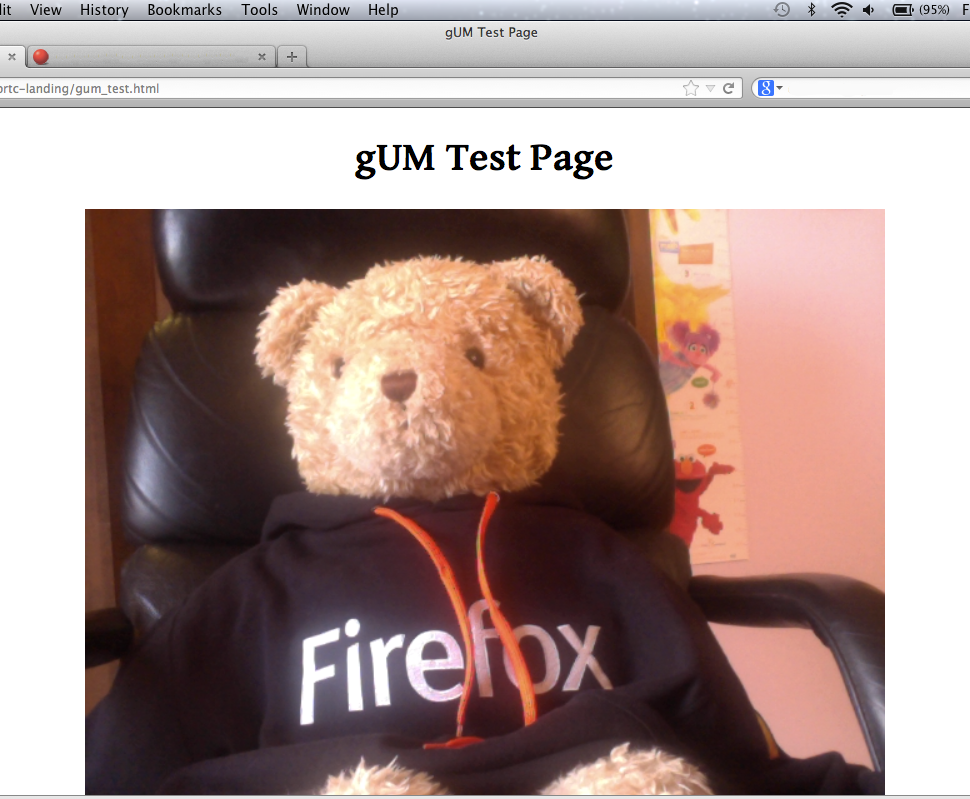getUserMedia (navigator.mozGetUserMedia), also affectionately known as gUM, is now enabled by default in Aurora. Why is this so awesome?
gUM is a new HTML5 DOM API that allows the browser to capture local camera and/or microphone streams directly, and not through third party plugins. This means JavaScript developers can now quickly and easily write code to access the user’s camera or microphones (with the user’s permission, of course) without having to install anything because the support is already inside the browser.
We still currently prefix gUM as mozGetUserMedia because the standards committee is not yet done defining it. So, gUM demos that work with Chrome (using the navigator.webkitGetUserMedia call) will need to be modified to include the moz prefix.
Here’s a simple example of how to use the new gUM API. My four-year old and her Firefox bear (both interested in becoming active contributors to the Firefox project) really like this page:
gUM is also the first API component of WebRTC, which enables real-time, interactive, peer-to-peer audio/video calls and data sharing. The other big pieces of WebRTC, PeerConnection and DataChannels (a Mozilla first), still have some rough edges we’re smoothing out, but will also be enabled by default soon. You can try them now in Nightly or Aurora 20 by browsing to about:config and changing the media.peerconnection.enabled pref to “true”.
We know gUM is a powerful new tool that will make the Web even more incredible, and we’re thrilled to enable this new functionality in our browser.
– Maire Reavy, Product Lead, Firefox Platform Media
